OnePlus 8 vs OnePlus 8 Pro: what's the difference?
Should you go Pro?
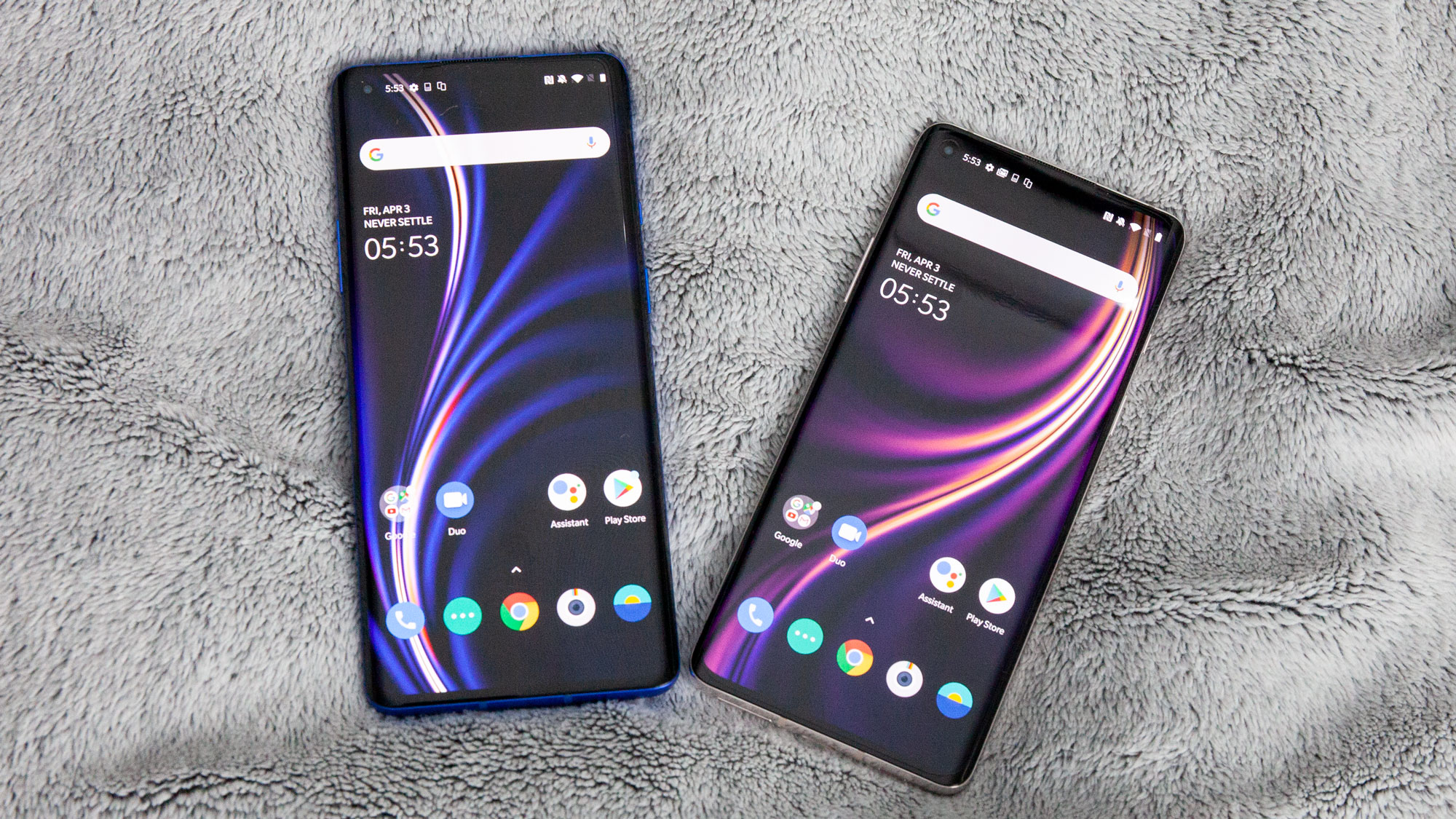
The OnePlus 8 is here and as has recently become customary for the brand it has landed alongside the even more high-end OnePlus 8 Pro.
But just what exactly do you get if you go Pro? And is it worth spending the extra on the OnePlus 8 Pro rather than getting the OnePlus 8 – which is already a high-end phone?
To answer the first question and help you answer the second one for yourself, we’ve compared these two phones in detail, looking at their designs, screens, cameras, and other specs, so you can see just how similar – or different – they are.
- Read our OnePlus 8 review
- Or our hands on OnePlus 8 Pro review
Price and availability
The OnePlus 8 and OnePlus 8 Pro will both be available in the UK and the US, hitting stores on April 21 in the UK and April 29 in the US.
The OnePlus 8 starts at $699 / £599 for a model with 8GB of RAM and 128GB of storage, rising to $799 / £699 for a version with 12GB of RAM and 256GB of storage.
The OnePlus 8 Pro meanwhile starts at $899 / £799 for 8GB of RAM and 128GB of storage, rising to $999 / £899 for 12GB of RAM and 256GB of storage. So you’re paying $200 / £200 more for the equivalent Pro model than for the basic OnePlus 8.
Design
The OnePlus 8 and OnePlus 8 Pro both have a glass back and a metal frame, with curved edges on both the front and back, like so many other flagships.
Get daily insight, inspiration and deals in your inbox
Sign up for breaking news, reviews, opinion, top tech deals, and more.
They also both come in Onyx Black or Glacial Green shades – though the OnePlus 8 is additionally available in Interstellar Glow, while the OnePlus 8 Pro additionally comes in Ultramarine Blue.

The OnePlus 8 is also the slimmer, lighter phone, coming in at 160.2 x 72.9 x 8mm and 180g, while the OnePlus 8 Pro is 165.3 x 74.35 x 8.5mm and 199g.
That means the OnePlus 8 Pro is also taller and wider, but then it also has a bigger screen, which we’ll get to below.
Display
The OnePlus 8 has a 6.55-inch display, while the OnePlus 8 Pro ups the size to 6.78 inches. The OnePlus 8 Pro’s screen is also higher resolution at 1440 x 3168 (for 513 pixels per inch), compared to 1080 x 2400 and 402 pixels per inch on the OnePlus 8.
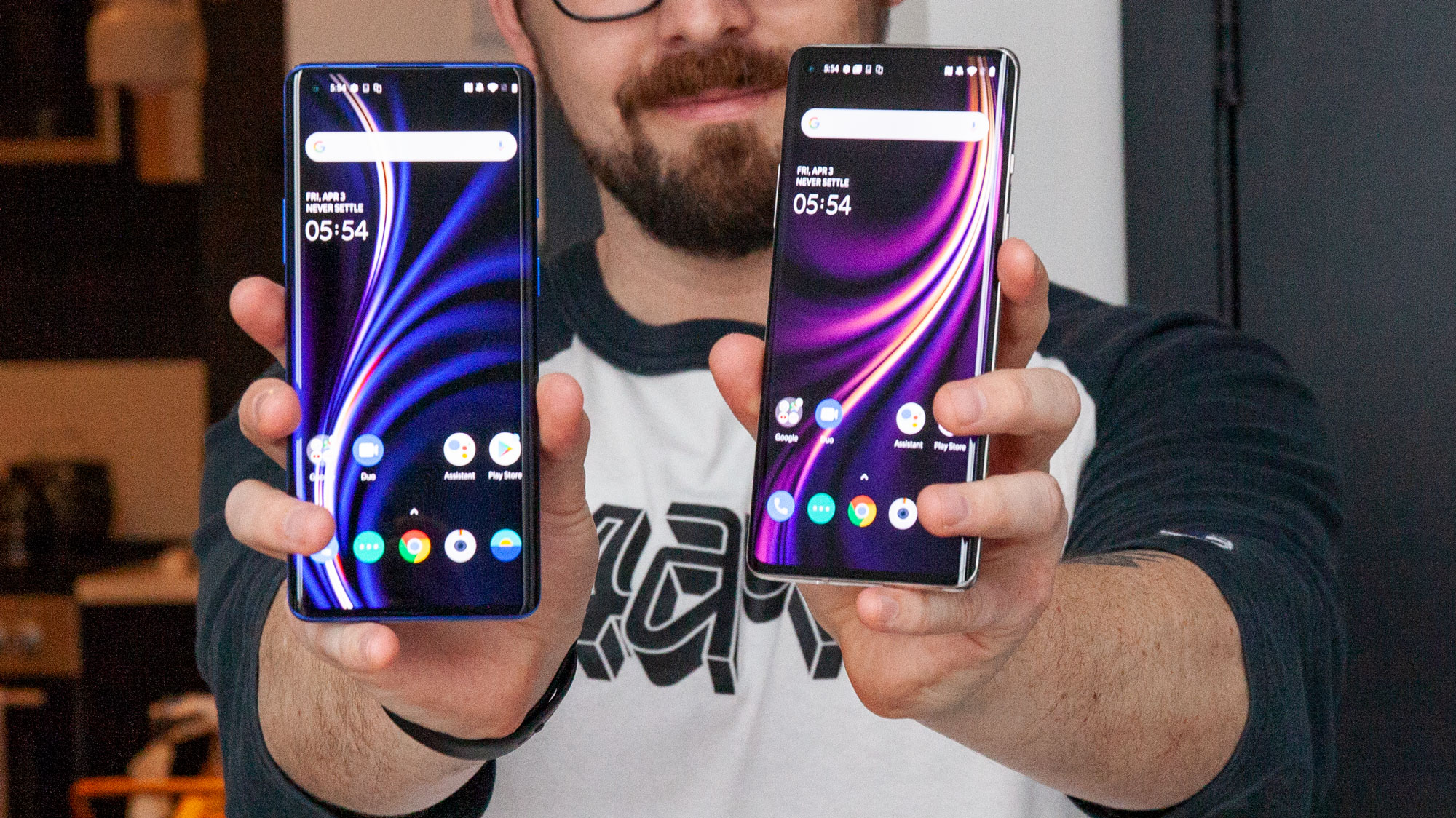
Plus, there’s a 120Hz refresh rate on the OnePlus 8 Pro, while it tops out at 90Hz on the OnePlus 8 – though that that’s still notably higher than the ‘standard’ 60Hz offered by the majority of smartphones. Still, the OnePlus 8 Pro’s screen is bigger, sharper and smoother than the OnePlus 8’s.
But both models have a Fluid AMOLED screen with HDR10+ support, both have a single-lens punch-hole camera in the top left corner, and they have similar but not identical aspect ratios. The OnePlus 8 is 20:9, while the OnePlus 8 Pro is 19.8:9.
Camera and battery
The OnePlus 8 has a triple-lens camera with a 48MP f/1.75 main sensor, a 16MP f/2.2 ultra-wide one, and a 2MP f/2.4 macro one.
The OnePlus 8 Pro on the other hand has a quad-lens camera, made up of a 48MP f/1.78 main one, a 48MP f/2.2 ultra-wide one, an 8MP f/2.44 telephoto one (with 3x hybrid zoom), and a 5MP f/2.4 color filter camera (focused on lighting effects and filters).
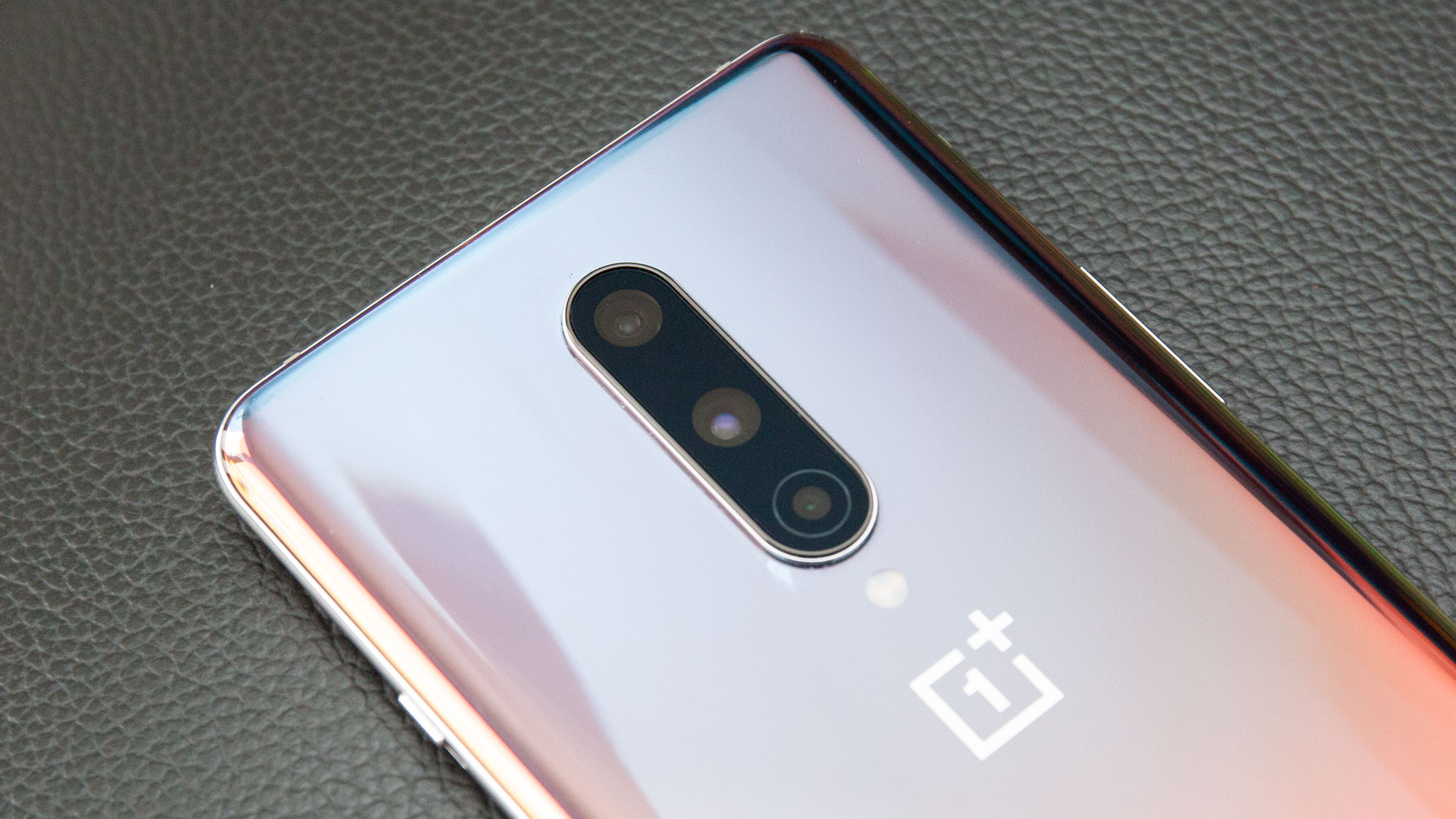
So the OnePlus 8 Pro has more and likely better lenses on the back, but both models have a 16MP selfie camera.
As for the battery, the OnePlus 8 has a 4,300mAh one and the OnePlus 8 Pro has a 4,510mAh one. So the battery is slightly bigger in the OnePlus 8 Pro, but there’s also a slightly bigger, sharper screen to power.
Both phones support Warp Charge 30T fast charging, but the OnePlus 8 Pro additionally supports wireless charging, which is a first for a OnePlus phone.
It also supports reverse wireless charging, so you can use it to wirelessly charge other devices.
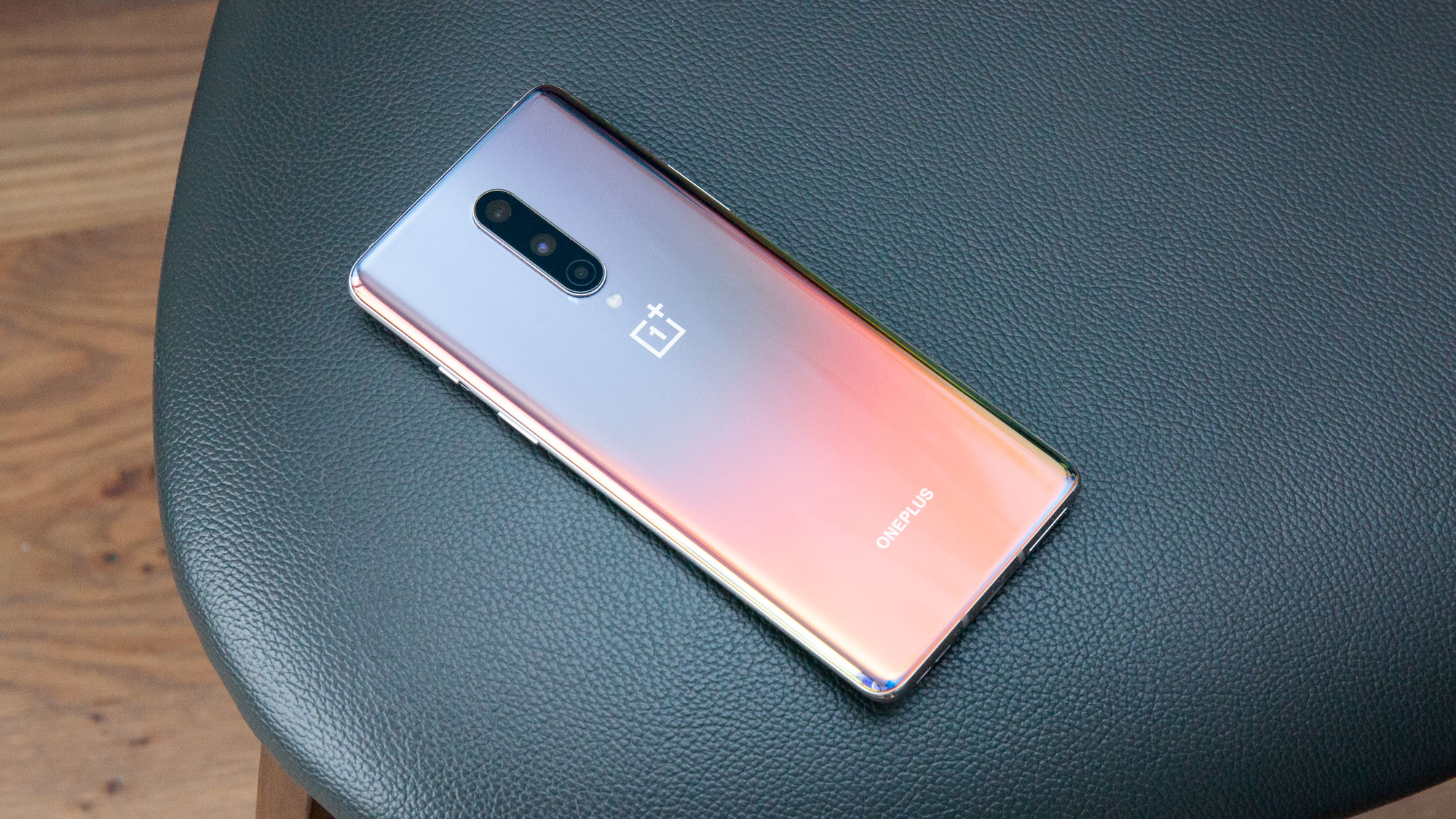
Specs and features
Both OnePlus 8 models have a top-end Snapdragon 865 chipset paired with 8GB or 12GB of RAM, but in the OnePlus 8 you’re getting LPDDR4X RAM, whereas in the OnePlus 8 Pro you’re getting LPDDR5 RAM, which improves memory speeds by almost 30% and reduces power consumption by 20%.
Storage comes in at a choice of 128GB or 256GB on both models, and both support 5G, run Android 10 (overlaid with the company’s OxygenOS), and have in-screen fingerprint scanners and dual stereo speakers. So there’s not a huge amount of difference here.
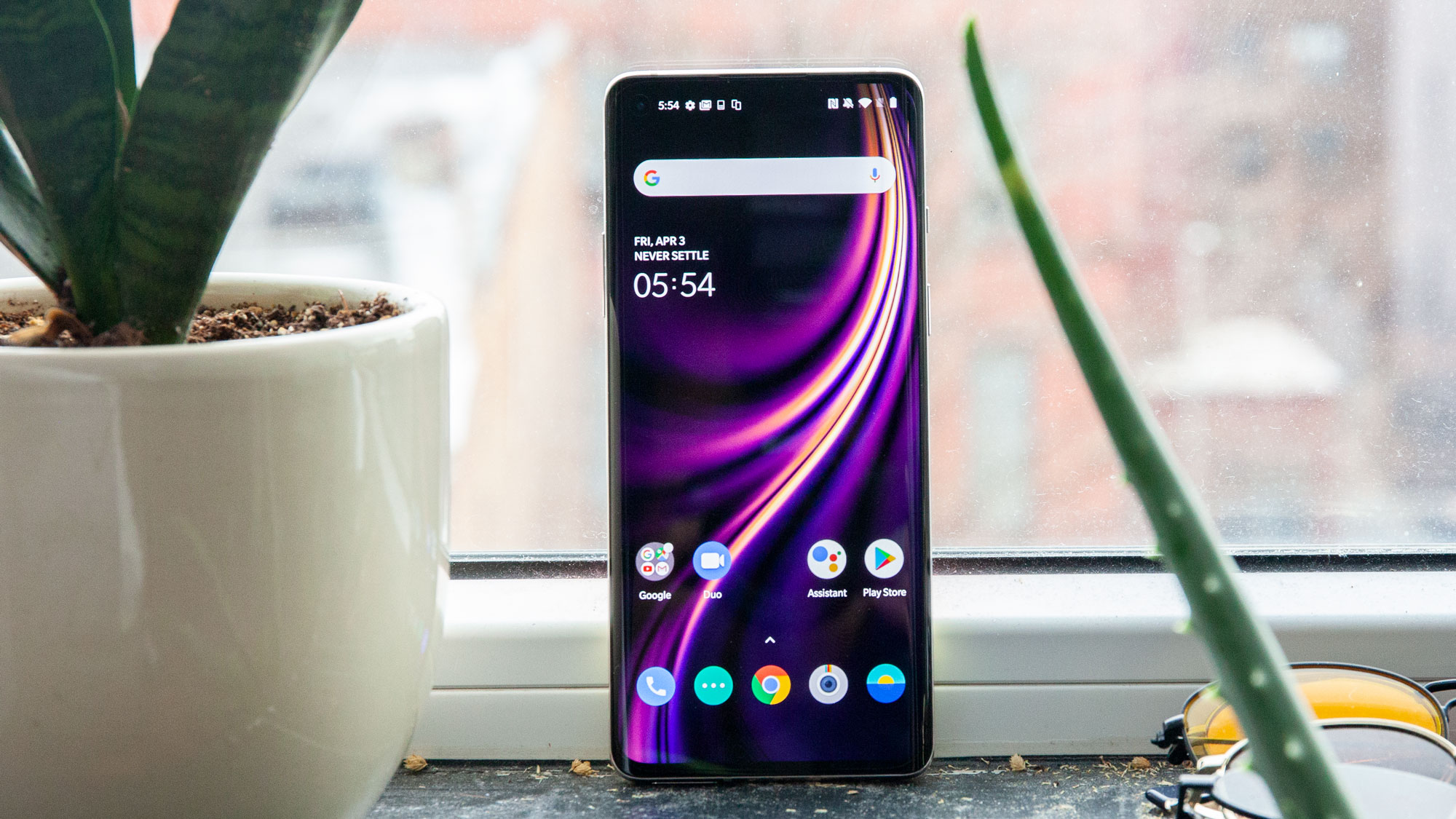
Takeaway
The OnePlus 8 and OnePlus 8 Pro have similar designs, the same chipset and software, and some other identical features, such as in-screen fingerprint scanners, but there’s a whole lot that’s different.
With the OnePlus 8 Pro you get a bigger, sharper screen with a higher maximum refresh rate, more cameras, some of which – on paper at least – have superior specs, faster RAM, a bigger battery, and wireless charging.
It sounds like a substantially better phone then, but it’s also substantially more expensive, so may not end up being as good value. As for how good each handset is in practice – make sure to check our OnePlus 8 and OnePlus 8 Pro reviews to find out.
- Will either of these make our list of the best phones?
James is a freelance phones, tablets and wearables writer and sub-editor at TechRadar. He has a love for everything ‘smart’, from watches to lights, and can often be found arguing with AI assistants or drowning in the latest apps. James also contributes to 3G.co.uk, 4G.co.uk and 5G.co.uk and has written for T3, Digital Camera World, Clarity Media and others, with work on the web, in print and on TV.